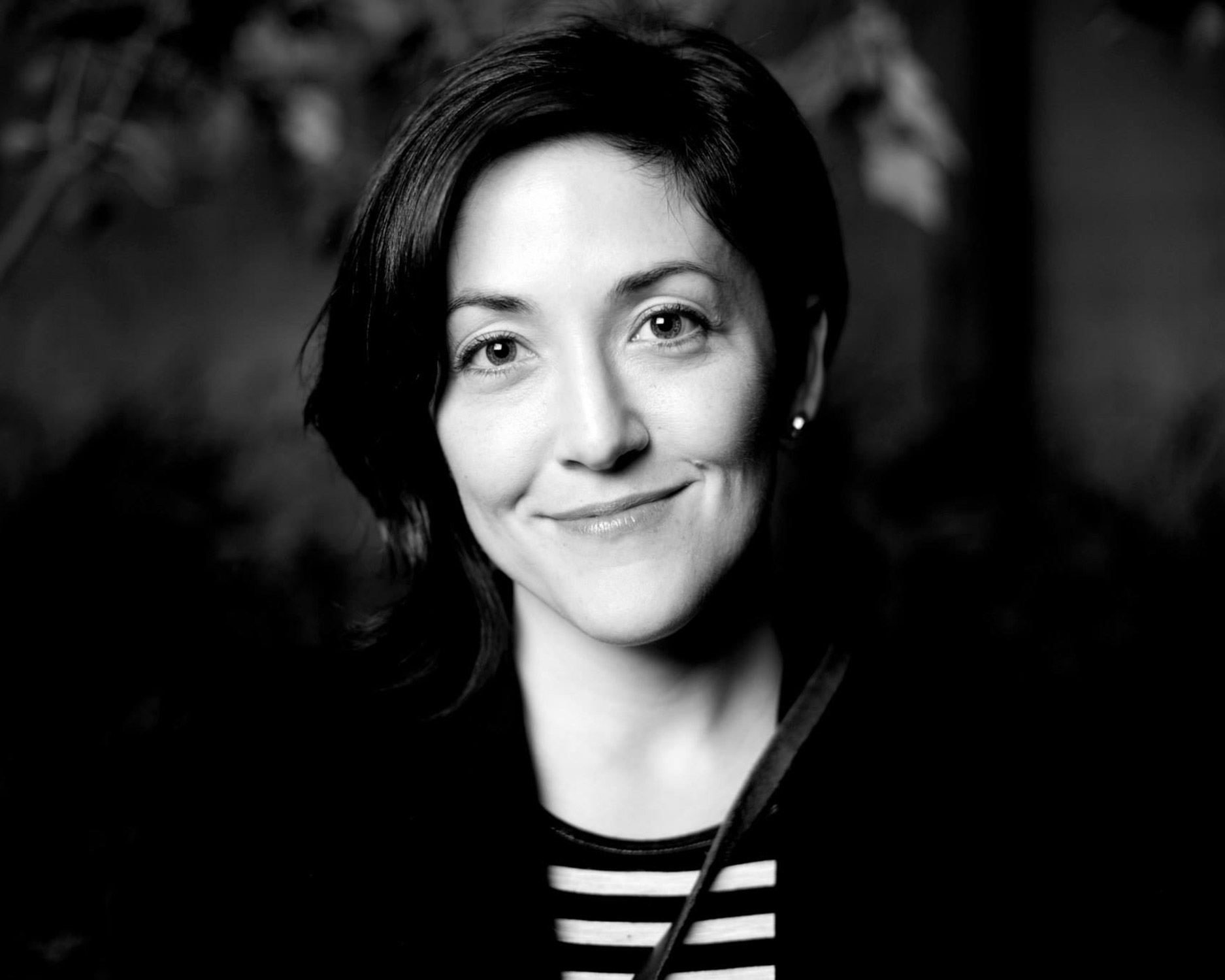
- Interview by Tina Essmaker February 3, 2015
- Photo by Victor G Jeffreys
Grace Bonney
- designer
- entrepreneur
- writer
Grace Bonney is a writer and founder of Design*Sponge, which launched in 2004 and attracts over 1 million readers per day. Previously, Grace was a contributing editor at Domino and House & Garden and freelanced with top publications like New York Home, Food & Wine, In Style, New York Magazine, and more. In 2006, she founded the D*S Biz Ladies series, and her book, Design*Sponge at Home, debuted in 2011. She also hosts a weekly radio show, After the Jump, which is dedicated to exploring the bigger issues within the creative community. Grace splits her time between Brooklyn and Upstate New York.
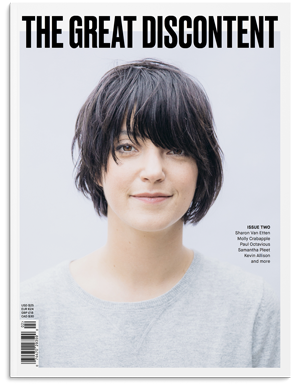 Shop News: TGD’s second print issue, which features Sharon Van Etten and many more, is now shipping! Issue Two revolves around the theme of hustle and will implore you to reconsider the idea of making it—both how you do it and how you define it. Go to the shop ↪
Shop News: TGD’s second print issue, which features Sharon Van Etten and many more, is now shipping! Issue Two revolves around the theme of hustle and will implore you to reconsider the idea of making it—both how you do it and how you define it. Go to the shop ↪
Describe your path to what you’re doing now. I grew up in Virginia Beach, which is like the Jersey Shore of the South. (laughing) I graduated from high school in 1999 and moved to New York to study journalism at New York University (NYU), but I didn’t like the program. Shortly after, I transferred to College of William & Mary in Virginia to pursue a degree in fine art instead of journalism. Although my path to Design*Sponge was something I couldn’t have predicted, when I think about what I do now, I realize that I was cobbling together two different areas of study. Nowadays, people can map out careers in online publishing, but that didn’t even seem like an option when I was in college.
There was one moment during my senior portfolio critique that I’ll never forget. Most of my teachers looked over my work and said it looked alright, but one teacher remarked, “This is awful. You’ll never be an artist, you’re never going to work in the art industry, and you don’t have any talent.” Those words were very focused and intense, and I was so upset that I left the room. One of my printmaking professors followed and apologized to me for the other professor’s comments. She told me, “Look, I disagree with what he said. I think what he meant to say was that producing artwork isn’t your thing, but I think I know what you do well.” She explained, “I’ve been watching you over the last couple of years. You’re someone with a good eye who’s interested in talking about art and design. Find a way to do that.” In a way, I’m glad that I totally bombed my portfolio review, because I took my professor’s advice.
Following graduation, I returned to New York. I literally received my degree and had my dad drive me to New York the next morning. I had done a radio show at William & Mary, and I had landed a summer internship with a record label, but I hated it. As soon as that was over, I immediately took the first design job I could find, which was in public relations. I spent a couple years doing design PR and started Design*Sponge as a hobby during my lunch breaks at the office. After a year of running Design*Sponge, I got a job offer at House & Garden magazine, so I left my job and worked freelance there—and at other magazines—while running Design*Sponge at the same time. When many print magazines went under in 2008, I was shocked that my blog was the most stable thing I had going for me. That’s when I decided to really make a go of Design*Sponge as a business.
Was Design*Sponge immediately sustainable once you started running it full-time, or were you still taking freelance work to keep yourself afloat? I advise people to never, ever put that much pressure on their passion project. You need to become financially stable first, if that’s an option.
When I decided to focus on Design*Sponge full-time, I was working several freelance jobs: I wrote for House & Garden, HGTV’s Ideas magazine, and I randomly wrote a newspaper column for the Philadelphia Inquirer, even though I didn’t live there. I wrote about design anywhere I could and tried to gain as much experience as I possibly could. I wanted to understand how it felt to write for a magazine versus a newspaper versus a book. I took whatever jobs came my way.
Honestly, it wasn’t until 2008 when House & Garden, Domino, and all of the publications that I thought would offer safe jobs went under that I thought, “Okay, I really have to make my blog work.” At the time, I was making enough and could have paid myself a halfway decent income, but I wasn’t spending money that way; I was investing in everything except myself. I was funding the Biz Ladies series and traveling to organize events, and I had started a scholarship. I was doing everything else out of pocket. Had I not been spending money in that way, I might have been able to comfortably quit my day jobs.
“I’m an only child, so I became creative out of necessity…When I was little, my favorite toy was a typewriter; I sat at the dining room table and wrote pretend letters, magazines, and books.”
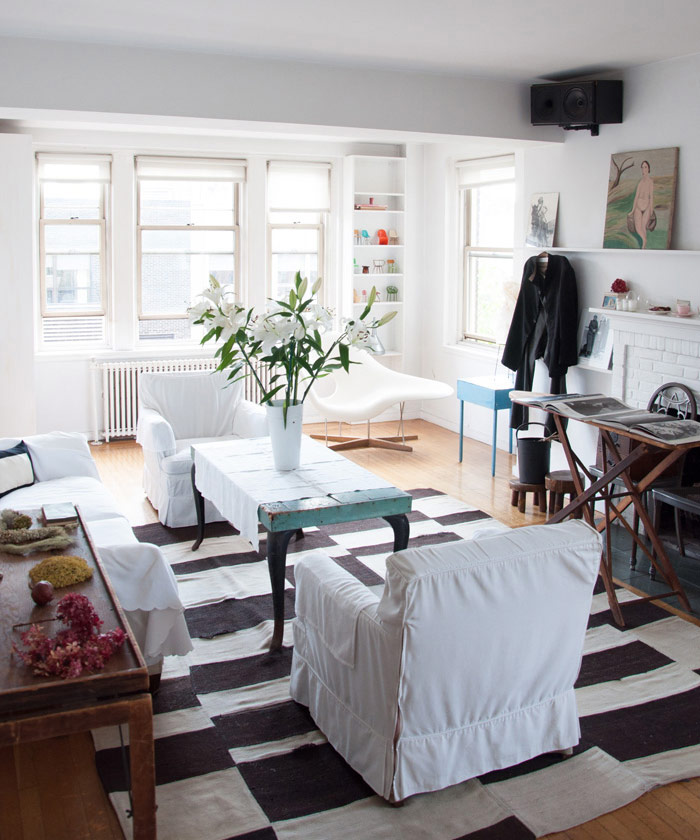

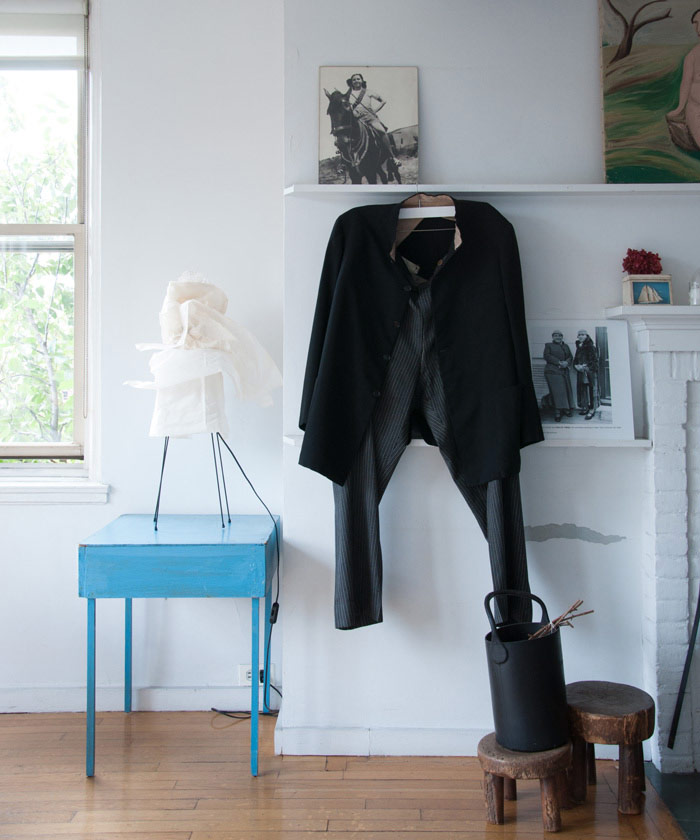
How long have you been focusing solely on Design*Sponge? I started Design*Sponge in 2004, but it’s been my sole job since 2008. When Domino went under, I could not believe it; it wasn’t my full-time job, but I had hoped it would grow into one. To see how shaky that whole industry was at the time rocked me to my core. I knew I could run my company cleanly, nimbly, and with a small footprint, but working at a magazine would never be that way. When I had that realization, I met with a financial advisor, an accountant, and a bookkeeper to get all of my ducks in a row. I figured out what I could afford to pay people, and I built my team from there. From the start, I had three or four part-time editors covering different categories like DIY or food and drink; I didn’t hire my first full-time editor until 2010. Now, I have a small team of about five people. I’ve always tried to keep it small: doing so helps us weather the ups and downs that come with working on the Internet and dealing with the ad industry, which is all over the place right now.
Was creativity a part of your childhood? Creativity has always been a part of my life, but not in the way it is for most creative people. Most artists I interview tell me about how their parents encouraged them to paint or draw when they were kids, but it wasn’t like that for me. I’m an only child, so I became creative out of necessity: when you don’t have anybody to play with, you have to come up with things to do. When I was little, my favorite toy was a typewriter; I sat at the dining room table and wrote pretend letters, magazines, and books.
My parents were pretty creative, too. My mom is an amateur interior designer who is wonderful with flowers and gardening, and my dad loves photography and architecture. Creativity was around while I was growing up, but it wasn’t specifically encouraged. I think my parents wanted me to go into a field that would be as stable as possible, so I can understand them not wanting to necessarily push me toward interior design or another creative field.
Was there an “Aha!” moment when you realized you wanted to do Design*Sponge full-time? I feel like every career has a series of pivot points rather than one big “Aha!” moment. I was pushed into my first pivot point when all of the magazines I was writing for closed, but every year something forces me to make the choice to either stay or go. Each year I ask myself, “Do I still enjoy this? Is this what I want to do when I wake up every morning?” I certainly don’t want to write something that isn’t full of excitement and passion, and people don’t want to read something that isn’t, either.
Most bloggers seem to wonder, “Will I sell my site? Will I get another job?” But those are never the options in my head. My options are, “Do I want to keep writing about design or do I want to go do something completely different?” It’s a gut check about whether it’s time for me to learn something new or go into a different field. I’m somebody who enjoys working from the bottom up, so I’m consistently ready to try totally new work. But so far, every year I’ve realized that I still really love my job, and I’m going to stick with it as long as that’s the case.
Have you had any mentors along the way? The most obvious mentor I can think of is my father. I love both of my parents very much, but my father has been running his own business out of his home for quite some time now, and that was a big deal when I was growing up. My father used to work for an ad agency, but at one point a ton of people were laid off, including him. He decided to go out on his own, and he has done so well. It was incredibly important for me to see that from an early age. It made it easier for me to believe that starting a business rather than working for somebody else was totally feasible if I was willing to work for it.
Another mentor of mine has been Dominique Browning, the former editor-in-chief at House & Garden magazine. She has meant the world to me. I admire her dedication to finding beauty and, in the least snobby way possible, constantly hunting for interesting things. She’s genuinely interested in what’s new and what young people are doing, and she doesn’t seem to be threatened by the new wave of people coming up. That has been endlessly inspiring for me.
Has there been a point when you’ve decided to take a big risk to move forward? Every week is a risk. (laughing) Running an online business is difficult. It’s not for people who are searching for some sort of ultimate stability, because that does not exist. I am inherently somebody who looks for that sort of stability, who wants to build it and then relax a bit; that is something I struggle with all the time. With the Internet, you can’t hold on to what you’ve built for a second before it has already changed—it changes while you’re working on it. Decisions to hire someone, redesign the site, try new products, or change anything are always going to be huge risks because they divert my attention, time, and money to things that don’t directly support the business that pays the bills. It always feels risky, but it’s the nature of working online.
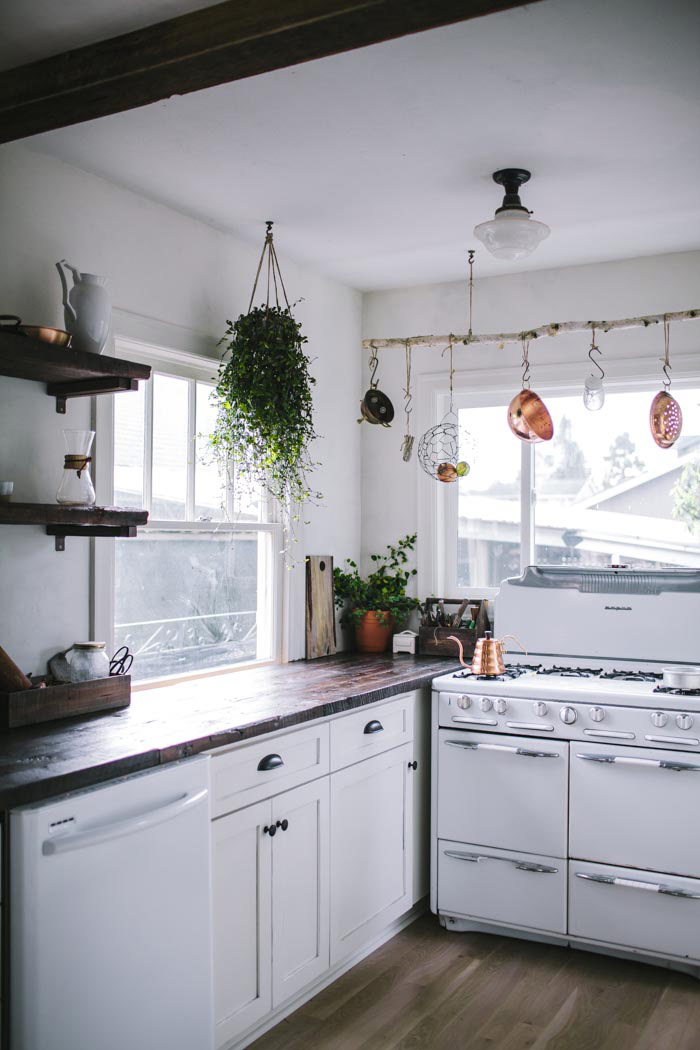
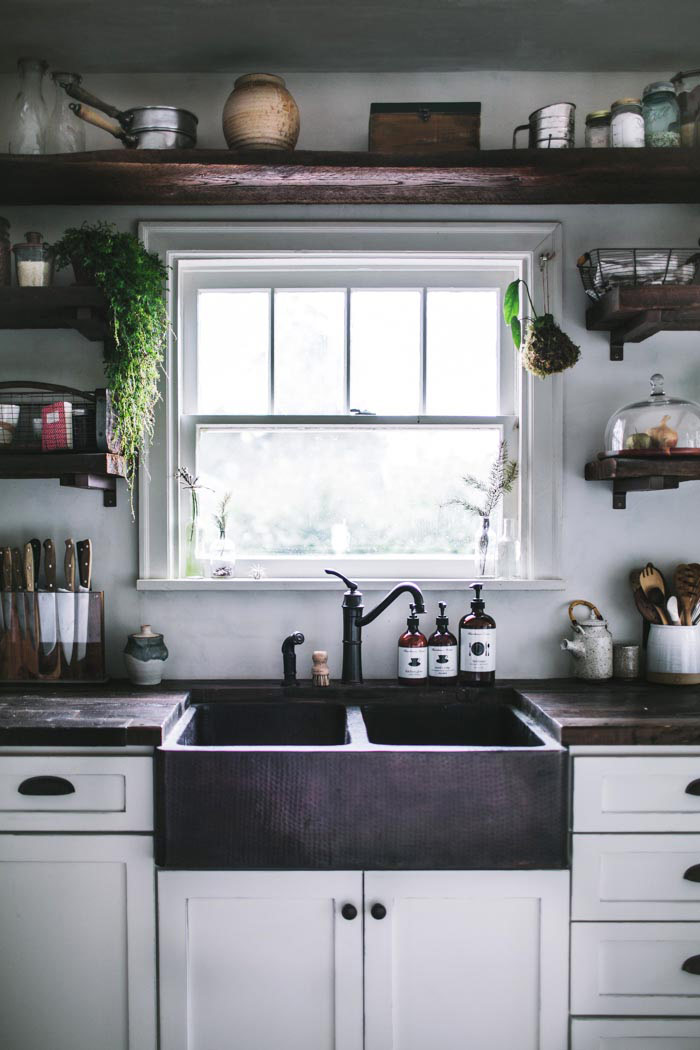
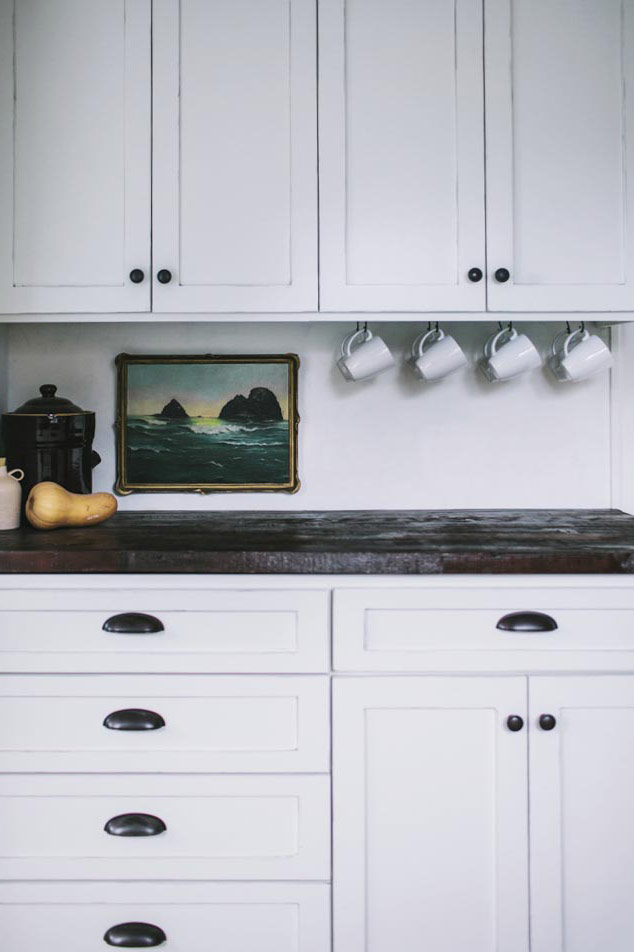
Working online has been one big practice in getting used to not caring so much about what everybody thinks. That has always been difficult for me because, since I was a little girl, I’ve cared way too much about what other people have thought about me. However, I have always felt confident about my work; I was protective of my writing and the work I did as a fine art major, but I didn’t feel threatened by others. The Internet has been a great experiment in getting over what people think about me personally; it’s been a good practice in building a thick skin because I’m constantly putting myself out there. The feedback is often great, but it only takes one or two negative comments to cut right under my skin, especially when it’s something I already feel insecure about. Working on the Internet can be like a big therapy session.
I totally agree. Are your family and friends supportive of what you do? Completely. They’ve always supported me, even though they didn’t understand what I was doing for the first few years. They asked, “Where is this thing you’re writing, and why can’t I buy it in a store?” It took a while for them to understand how blogs worked. I think that is true for most people in this field, but when your work is mentioned in a magazine somewhere, it becomes real, particularly for parents. When I hired people and became a boss, then my parents saw that what I was doing was real.
Do you feel a responsibility to contribute to something bigger than yourself? Absolutely. If I didn’t, I would stop what I’m doing right now. There are obvious ways that design makes a difference in the world, especially when it comes to innovation and products that help people. However, in my portion of the field, which is primarily about decorating and products that aren’t essential to human life, it becomes more challenging to figure out what I’m doing to make a difference and improve the world.
Every year I try to add a project that creates more substance or centers around a real conversation. For instance, last year I produced a radio show called After The Jump, and the year before that I set up the Biz Ladies series and a scholarship. Figuring out what’s within my skill set that I can do to create change or a resource is consistently on my mind.
Are you still doing the Biz Ladies series, and is it still a meet-up? It’s not a meet-up anymore. A lot of people would prefer it to be a meet-up, but it’s not financially feasible for us to be in every city all the time. It’s also not how I prefer to live my life: I’m comfortable being at home where I get more work done versus being on the road.
After traveling for most of 2008, I turned Biz Ladies into a regular weekly column in 2009. When I did that, two things happened: first, Biz Ladies was no longer solely available to women. That was the initial intention, but at a certain point I realized that if I really wanted to help the creative community, I’d be limiting myself by theoretically only sharing that content with women. There is plenty of great advice to be given from everyone to everyone. Having the series as a weekly column means it’s free and more accessible. The second thing that happened was that the Biz Ladies column led to the creation of my radio show, After The Jump.
I read that you started After The Jump without wholly knowing what you were doing. Did you teach yourself as you went along? Yeah. (laughing) I started the show primarily because I’m an incredibly bad interviewer. I’m better in written form, but in person I clam up and don’t know what to ask. I decided that I needed to get more comfortable with that, and there’s no better way to get more comfortable with something than to completely throw yourself into it. I had done a music radio show in college, so I was comfortable with the format, but I wanted to talk to people instead of playing music. I also wanted to talk about business issues, and the show has created a half hour each week for me to talk more in-depth about those subjects.
Are you creatively satisfied? Never! I’ve learned not to put so much weight on the idea of being satisfied by one outlet. For a long time, I expected Design*Sponge to fill every possible void in my life, whether it was relational or business-related. I enjoy my job more now that I don’t put so much pressure on it as the be-all and end-all of my fulfillment as a person. The more I get outside and do things that have nothing to do with the blog, the more fulfilled I feel. I feel most creative when I’m not doing design-related work.
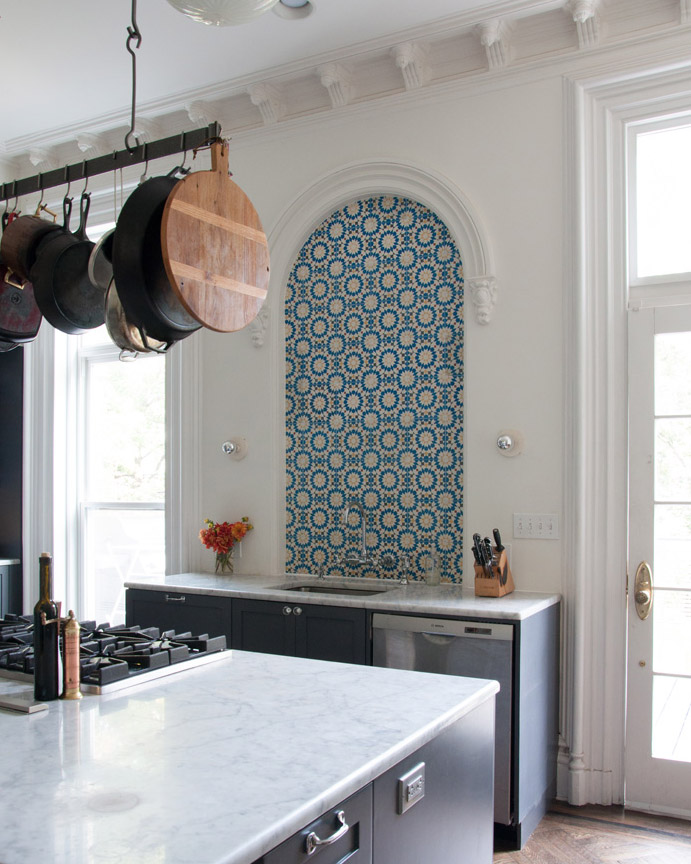
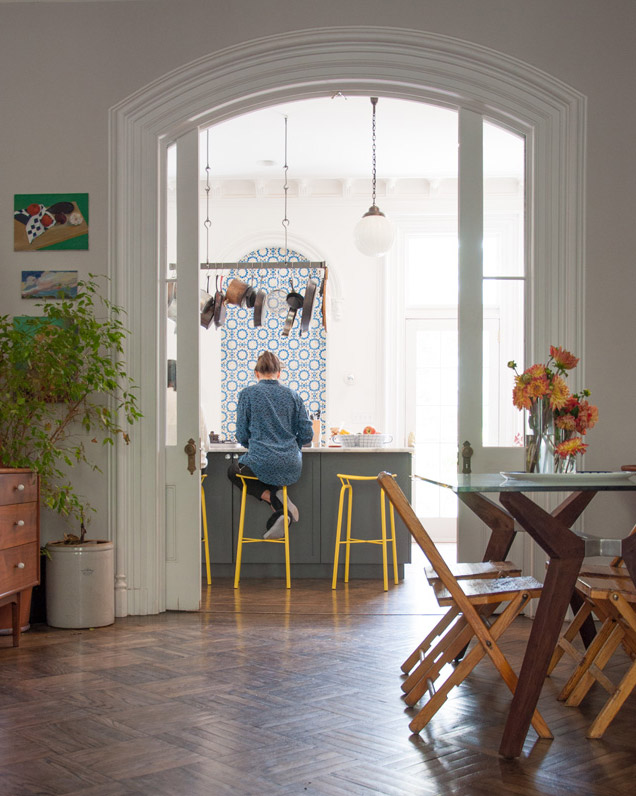
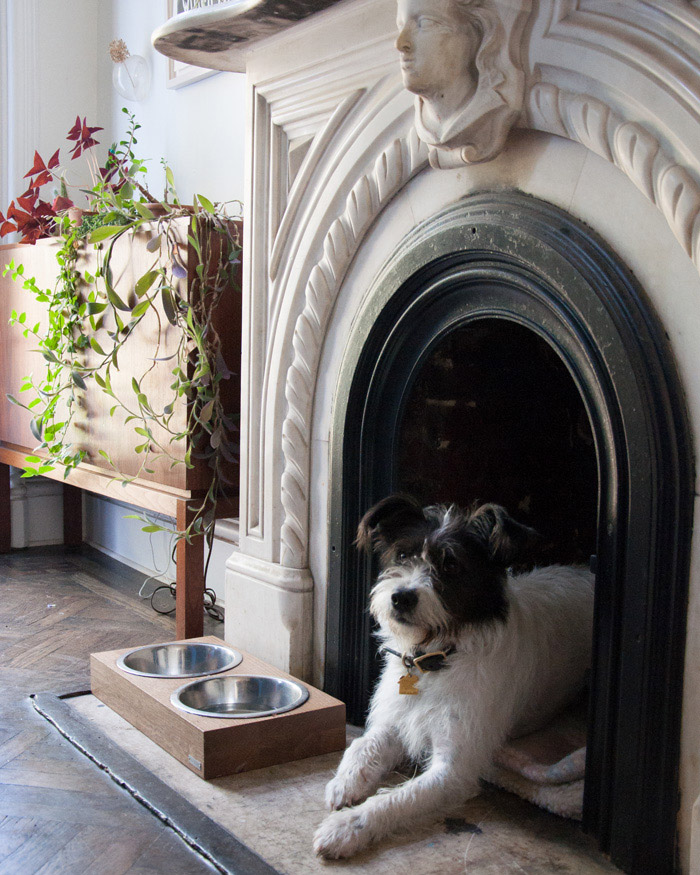
In your Weapons of Mass Creation talk, you shared about making a yearly vision board to help you focus on what is most important to you. I liked seeing the progression of your boards, especially your most recent one, which was more about relationships and enjoying life outside of work. It’s hard—there are times in everybody’s life when it’s okay to put work higher on your priority list than you may want to at other times. For years, I was getting so much out of Design*Sponge that I wasn’t getting from my personal life, and I was fine with making the blog front and center in my life. At a certain point, it became clear that I needed to put it a bit further down on my list of priorities so I could find out what made me feel happier and more well-rounded.
I used to be skeptical of vision boards, but now I make them for everything. They work! I’m writing a second book right now, and I made a board for that because I couldn’t figure out what the goal and promise of the book was supposed to be. I sat down on the floor and spent hours cutting out pictures and words, and then pasting them to a board. Once I did that, it became incredibly clear what I actually wanted to write about versus what I wanted to say in theory. I swear by vision boards: they’re so helpful and are a great way to tap into your subconscious to find out what you truly want.
Speaking of vision, are there things you’d like to explore in the next 5 to 10 years? I’m writing a book that will be out in the next few years, so that’s what I’m thinking about right now: Will we do a book tour? If so, where will it be? Will the book’s content change the site at all?
Otherwise, my main goal is to build a site that matches in voice and message. I can’t control people’s perceptions, but I want to ensure that every post and every image is on message. I want to spend the next year refining and developing our content so that we are promoting our values, and not just posting pretty pictures.
“Each year I ask myself, ‘Do I still enjoy this? Is this what I want to do when I wake up every morning?’ I certainly don’t want to write something that isn’t full of excitement and passion, and people don’t want to read something that isn’t, either.”
What advice would you give to someone who is just starting out? Spend time figuring out what makes you different from everybody else. There are a million design and art bloggers, which is wonderful, but the best way to stand out is to focus on and celebrate what makes you completely different. Maybe it’s where you live, your family history, or an obscure hobby that you’re into. Starting there and expanding is a much faster way to stand out than making a site that covers what everyone else is already writing about.
These days, even the idea of starting a site is a little too narrow because the blog is no longer king of the Internet: you need to have a YouTube channel, an Instagram page, a Pinterest account, a Twitter handle, and a Facebook page. All of those platforms need to be fingers on the hand of your brand; instead of a central focus on a blog, you’re going to need to put equal time into messaging across all different platforms. Having that broadness in mind from the beginning is very beneficial.
That’s great advice. So, you live in Brooklyn, right? My wife, Julia, and I recently bought an old home in Ulster County, NY. We’re restoring that right now, so we’re spending most of our time upstate. We’re keeping our Brooklyn apartment for now, but we haven’t yet figured out what our balance will be. I really love being away from the city, so I’m hoping we’ll be upstate full-time in the not-so-distant future.
How do the city and your neighborhood upstate influence your creativity and work? The way that Brooklyn inspires me has changed over the years. When I first moved here almost 12 years ago, Brooklyn was my main creative influence. There was all this incredible design work happening in Williamsburg, and nobody was writing about it. In part, that’s what inspired me to start Design*Sponge.
At the time, Brooklyn was already gentrified, but it has since become incredibly cookie-cutter. There is still amazing and unique work happening, but when everyone in the country understands how to replicate Brooklyn design so easily, it’s a sign that the creative community here needs to push against that and do something different. For me, Brooklyn is more of a place to get away from what I do on the site, to embrace my primarily Polish neighborhood, and to talk to people who don’t pay attention to social media—it’s nice to have a break from all of that.
That being said, there are incredible things happening in Upstate New York, too. There are so many creative communities and young people who are doing great work, which is informed by what they find around themselves, whether that’s raw materials or historical influences. I’m paying attention to that more than what’s happening in Brooklyn right now.
Is it important to you to be a part of a creative community of people, and do you have that? Yes, it’s important to me, but right now it’s even more important to be connected with people who run creative businesses versus being around people who make things. Running a business, especially when you have employees, is pretty tough. It’s hard to find people who understand why you want to be asleep by 10pm. (laughing) I seem to have curated a small group of friends who all run their own businesses and feel great about having dinner at 5:30pm. That’s my focus right now, but it waxes and wanes. It’s also nice to have friends who do something totally different, which is one of the reasons I got a dog a couple years ago: I wanted an excuse to get outside and meet people who had nothing to do with art and design. It’s been nice to connect with people who are creative, but don’t work in my particular niche of art and design.
What does a typical day look like for you? Over the last six months, I’ve spent a lot of time reshaping my team and figuring out what works best for everybody. Right now, an average day is what it was ten years ago, which is great: I work from home every day, typically from 7am to 7pm, but sometimes I work later if I have to. Some days I head out for a photo shoot on site, but, for the most part, I love that I can do almost anything I need to from my computer.
What music are you listening to right now? Actually, Lil’ Kim, Missy Elliot, and Da Brat reunited to perform “Not Tonight” (Ladies Night Remix)” at the Soul Train Awards a little while ago, so I’ve been playing that song in a loop—I love the music video for it! (laughing)
I used to work at a record label, and I spent tons of time listening to music. Unfortunately, it became a race to see who could discover music fast enough to be over it before everybody else was into it. I became tired of that attitude, so I totally checked out of contemporary music. Now, I usually play older albums from The New Pornographers and The Dismemberment Plan on repeat. The only contemporary music I like is a band out of New Jersey called Screaming Females. I use their song “Bell” as the theme song for my radio show. That’s about it: I have become one of those old people who only listens to four bands. (laughing)
Do you have any favorite TV shows or movies? I watch TV constantly. I know it’s super uncool to enjoy TV, but I love it. I watch a ton of Modern Family and The Goldbergs, which nurtures the part of me that is traditional and southern and thinks about family life and the suburbs 24/7.
When it comes to movies, I’m the total opposite. I’ll either watch a gory horror movie—which is my favorite genre—or something thought-provoking. For instance, I recently saw Birdman in the theater, and it blew my mind. That was one of the most creative movies I’ve seen in a long time.
Do you have any favorite books? I just started reading the Marie Kondo book that everybody is talking about, The Life-Changing Magic of Tidying Up: The Japanese Art of Decluttering and Organizing. I was thrilled to find out that I mostly already live that way. I don’t hold on to anything; I like to let stuff go or give it away.
Otherwise, I almost always have a Pema Chödrön book on repeat. They are a little hippie and spiritual, but in a way that is important for me. Like I mentioned before, I’m consistently trying to reconcile working in an aesthetic industry with focusing on the truly important aspects of life. I find that when I read books, they tend to be about self-help, spirituality, or finding meaning in everything.
What’s your favorite food? Chocolate cake!
What kind of legacy do you hope to leave? A couple years ago, I got hung up on what my legacy for Design*Sponge would be. I wondered, “If I’m lucky enough to live to be 90, will any of this actually mean anything?” I realized that none of it would be nearly as important as the relationships in my personal life. Since then, I’ve been trying to focus on making sure that the people in my life know how much they mean to me and how much I appreciate them. I want to have made the people in my life feel loved—that’s all I really care about.
“I’ve learned not to put so much weight on the idea of being satisfied by one outlet. For a long time, I expected Design*Sponge to fill every possible void in my life…I enjoy my job more now that I don’t put so much pressure on it…”